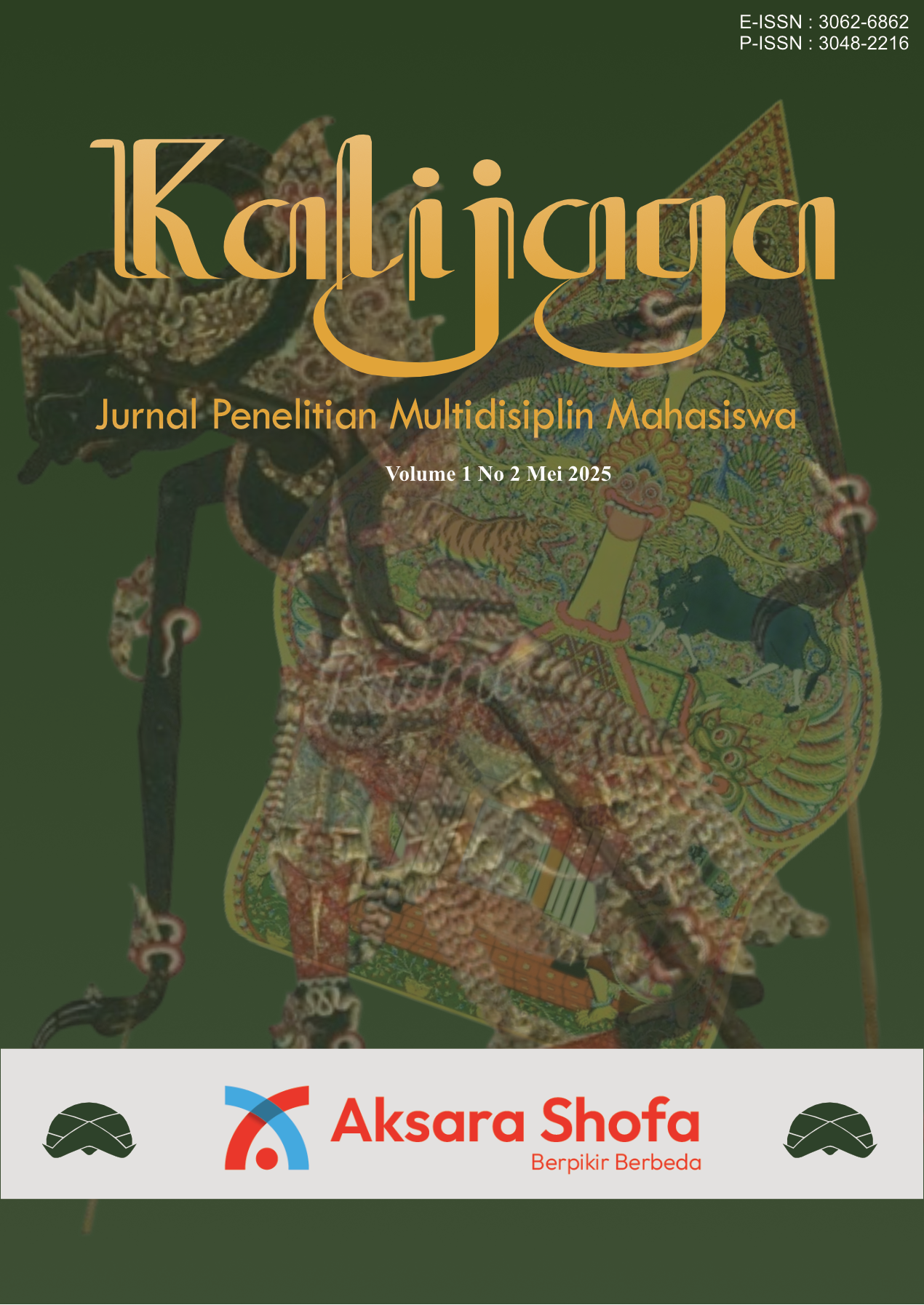Diffusion of Innovation in Distance Learning: A Case Study of the Open University
DOI:
https://doi.org/10.62523/kalijaga.v2i2.37Keywords:
Learning, Innovations, TechnologicalAbstract
Open University, Indonesia’s pioneer in distance learning, has adopted various technological innovations to expand educational access. This study analyzes the diffusion of educational innovations at UT using Everett M. Rogers’ Diffusion of Innovations theory. Employing a qualitative case study design, data were collected through document analysis, field observation, and media content evaluation, focusing on UT’s LMS, UT Radio, and UT TV. Findings show UT’s diffusion process aligns with Rogers’ five key elements: innovation, communication channels, time, social system, and adopter categories. The combination of mass media and online platforms effectively facilitates diffusion despite challenges such as digital divide, limited digital literacy, and student engagement issues. Recommendations include enhancing infrastructure, providing digital literacy training, increasing interactive content, and leveraging social networks to support innovation adoption. This study offers valuable insights into innovation diffusion in distance education, especially in developing countries
References
Ardiyanto, A., Mulyadin, T., Santi, A. M., & Dharma, I. G. B. B. (2021). Online Classrooms During COVID-19 Pandemic: A Survey of Industrial Engineering Instructors in Indonesia. Higher Learning Research Communications, 11(1). https://doi.org/10.18870/hlrc.v11i1.1232
Arones, M., Cruz, J. G. E. D. L., Pereyra, Y. R. G., & Ayala, P. H. C. (2020). Disruptive Innovation of Educational Digital Tools and the Achievement of Communication Skills in University Students. 9, 51. https://doi.org/10.1145/3439147.3439167
Braun, V., & Clarke, V. (2006). Using thematic analysis in psychology. *Qualitative Research in Psychology*, *3*(2), 77–101.
Çaldağ, M. T., Gökalp, E., & Alkış, N. (2021). ICT-Based Distance Higher Education: A Necessity During the Era of COVID-19 Outbreak. In Studies in systems, decision and control (p. 365). Springer International Publishing. https://doi.org/10.1007/978-3-030-67716-9_23
Marini, S., & Milawati, M. (2020). Distance Learning Innovation Strategy in Indonesia During the COVID-19 Pandemic. Proceedings of the 5th Annual International Seminar on Transformative Education and Educational Leadership (AISTEEL 2020). https://doi.org/10.2991/assehr.k.201124.085
Martha, A. S. D., Junus, K., Santoso, H. B., & Suhartanto, H. (2021). Assessing Undergraduate Students’ e-Learning Competencies: A Case Study of Higher Education Context in Indonesia. Education Sciences, 11(4), 189. https://doi.org/10.3390/educsci11040189
Mathew, I. R. (2016). Efficacy of Technology for Successful Learning Experience; Technology Supported Model for Distance Learning: Case Study of Botho University, Botswana. World Academy of Science, Engineering and Technology, International Journal of Educational and Pedagogical Sciences, 3(9). http://waset.org/abstracts/54514
Nangawe, A. G. (2015). Adoption of web-based assessment in higher learning institutions (HLIs). Journal of Applied Research in Higher Education, 7(1), 113. https://doi.org/10.1108/jarhe-03-2014-0036
Rogers, E. M. (2003). *Diffusion of innovations* (5th ed.). Free Press.
Siregar, R., Lubis, S., Risnawaty, R., & Ramadhan, A. (2021). STUDENTS’ PREFERENCES ON ONLINE LEARNING IN THE NEW NORMAL PERIOD OF THE COVID-19 PANDEMIC. LANGUAGE LITERACY Journal of Linguistics Literature and Language Teaching, 5(2), 404. https://doi.org/10.30743/ll.v5i2.4560
Than, W. W., Kyaw, E. M., & Htoo, H. Z. (2021). A Meta-Analytic Structural Equation Modelling on the Unified Theory of Acceptance and Use of Technology in Higher Education. International Journal of Educational Management and Development Studies, 2(4), 44. https://doi.org/10.53378/352074
Widyaswari, T., Siahaan, S. M., & Stiawan, D. (202 C.E.). Analysis of Teachers’ Needs for Google Site- Based E-Learning Media Development in Indonesian Language Instruction at the Elementary Level.
Xue, L., Rashid, A. M., & Ouyang, S. (2024). The Unified Theory of Acceptance and Use of Technology (UTAUT) in Higher Education: A Systematic Review [Review of The Unified Theory of Acceptance and Use of Technology (UTAUT) in Higher Education: A Systematic Review]. SAGE Open, 14(1). SAGE Publishing. https://doi.org/10.1177/21582440241229570
Yin, R. K. (2018). *Case study research and applications: Design and methods* (6th ed.). Sage Publications.
Zuhairi, A. (2020). Developing a twenty-first century open university: The case of Universitas Terbuka Indonesia. *Asian Association of Open Universities Journal*, *15*(1), 1–11. https://doi.org/10.1108/AAOUJ-09-2019-0038.
Downloads
Published
Issue
Section
License
Copyright (c) 2025 Yogi Wiratomo, Suyitno

This work is licensed under a Creative Commons Attribution-ShareAlike 4.0 International License.






















